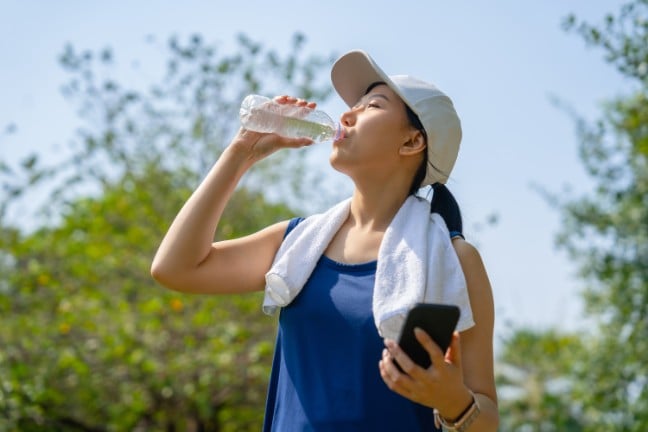With the heat index high throughout the state of Texas this year, staying vigilant about protecting yourself from heat-related illness is a big deal. If you have an athlete in the house, no matter their age, make sure they’re aware of how to protect themselves in extreme heat. For children under 18, equipping them with the right information and the right hydration options will help them stay safe.
Prevention is key to avoiding heat illness. Make sure all young athletes know about the danger of prolonged activity in high temperatures. Talk to coaches about the importance of protecting players—especially kids—in the heat. Learn to spot heat-related illness and what to do if you see it happening.
Help Athletes Keep Their Cool
If you or a member of your household is starting a sport this school year—especially after being indoors all summer—follow these beat-the-heat guidelines.
Start slowly. Acclimate yourself or your young athlete to the heat in stages. Encourage short outdoor workouts for the first couple of weeks, gradually adding time.
Ditch heavy uniform equipment. High heat indexes mean everyone, especially athletes who train outside, should keep clothing light and minimal, adding gear as their bodies become accustomed to exercising in the heat.
Avoid the hottest time of day, between 10 a.m. and 4 p.m. Coaches and other leaders should schedule training sessions and workouts outside these hours, either early in the morning or late afternoon and evening.
Stay hydrated. Water is the first and best choice to prevent dehydration. Make sure athletes have a good-sized water bottle. Remind everyone planning on hanging out in the heat to sip frequently throughout the day.
Cool off afterward. After spending time in the scorching sun, anyone can benefit from a cool water mist, bath or dip in the pool.
Rest. Take frequent breaks, retreat to air-conditioned spaces, and sip water to recover between workouts.
Learn and share the signs of heat-related illnesses, including heat cramps, heat exhaustion and heat stroke. Anyone spending time outdoors in the heat is susceptible, but if working out is part of that time, the risk to the athlete is higher.
Identify Signs and Symptoms of Heat-Related Illnesses
Heat stroke, the most dangerous heat-related illness, can be deadly if left untreated. The body cannot cool itself down any longer and begins to shut down. Remind your young athlete to watch for:
If you suspect heat stroke, call 911 immediately, then move the person to a cooler place indoors or in the shade. Use cool cloths and cool water to lower their body temperature. Do not give them anything to drink.
Heat exhaustion is often due to excessive sweating, depleting the body’s water and salt. Here’s what to watch for:
If you suspect heat exhaustion, move the person to a cooler spot. Loosen their clothing and use cool, damp clothes or a cool bath to bring the person’s body temperature down. Encourage them to sip water slowly. If symptoms get worse or do not improve after an hour, or if the person is vomiting, seek emergency medical care.
Heat cramps develop when you lose salt and water from excessive sweating during physical activity. When muscles don’t have enough salt, it causes severe, painful cramps. Heat cramps can also be early signs of heat exhaustion. Watch for:
If someone develops heat cramps, move them to a cool place indoors or in the shade. Give them water or a sports drink that contains electrolytes. The person should not return to physical activity until the cramps stop entirely.
Sunburn is caused by too much sun exposure, burning the skin. Here’s what to look for:
When someone gets sunburned, move them out of the sun. Cool cloths or a bath can help ease discomfort. Use lotion to keep the skin from drying out as it heals, and don’t break blisters.
If you’re concerned about safety during outdoor activities, a St. Luke’s Health primary care physician can recommend additional precautions to take.




